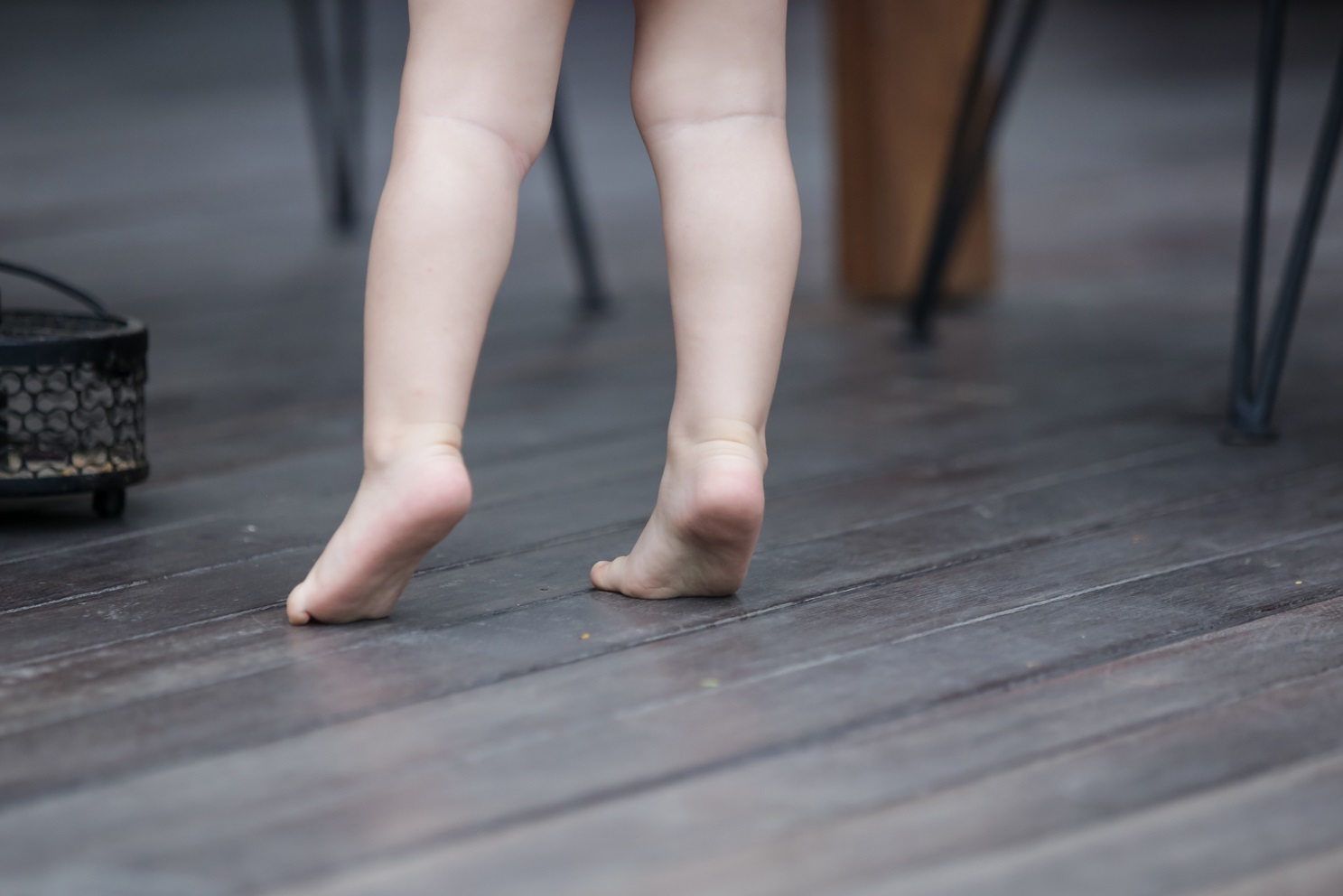By Francesca Resurreccion PT, DPT
What is Toe Walking?
Toe walking is exactly what it sounds like: walking on the toes with minimal or no contact with the ground by the heel. While it’s common for infants and toddlers to toe walk occasionally during early exploration of movement patterns, most children transition to a heel-to-toe gait by the age of three. However, in some cases, children continue to toe walk beyond this age. Occasional toe walking may not always indicate a serious problem, persistent toe walking can potentially signal an underlying issue that warrants attention, guidance, and sometimes intervention from pediatric physical therapists.
Why Do Children Toe Walk?
The reasons behind toe walking can vary widely, and it’s crucial to identify the underlying cause to determine the appropriate intervention. Some common reasons include:
- Tightness or Contracture: Tightness in the Achilles tendon or calf muscles can lead to difficulty in achieving a flat-footed gait.
- Seeking Sensory Input: Some children toe walk due to differences in their sensory processing, children may be seeking proprioceptive or vestibular input.
- Emotions: Some children may go up on their toes when experiencing heightened emotions such as excitement or anxiousness
- Neurological Conditions: Certain neurological conditions such as cerebral palsy or muscular dystrophy can contribute to toe walking.
- The surface they’re playing on is too tall. If you see your child cruising along a table or couch and they’re toe walking, you may need to adjust the surface by either taking off couch cushions or finding a shorter table (like an Activity Table)
The Role of Pediatric Physical Therapy
Pediatric physical therapists play a crucial role in evaluating and addressing toe walking in children. Through a comprehensive assessment, therapists can determine the underlying factors contributing to toe walking and develop personalized treatment plans. These plans may include:
- Stretching and Strengthening Exercises: Targeted exercises to stretch tight muscles and strengthen weak ones. For example, walking up a ramp to stretch the calf.
- Orthotics: Customized orthotic devices such as ankle-foot orthoses (AFOs) to help maintain proper foot alignment and support.
- Breathing exercises: When toe walking is paired with heightened emotions, therapist can work with the family to help incorporate calming breathing techniques to help regulate emotions and decrease the frequency of toe walking. For example, blowing bubbles or blowing on a pinwheel
- Sensory Integration Therapy: Activities aimed at improving sensory processing and promoting a more typical gait pattern. For example, working on different sensory sensitivities via exposing them to different textures or assisting you and your child in finding preferred sensory activities such as jumping for proprioceptive input or rolling for vestibular input
When to Seek Help
While occasional toe walking may not always be cause for concern, parents should consult with a pediatric physical therapist if their child:
- Persists in toe walking beyond the age of three.
- If toe walking is the preferred way of walking (seen 60-70% of the time) when barefoot or on different surfaces.
- Displays other developmental delays or motor difficulties.
Conclusion
Toe walking in children can stem from a variety of factors, and it’s essential to address it promptly to prevent potential complications and support optimal development. Pediatric physical therapists play a crucial role in identifying underlying issues, developing tailored interventions, and guiding families through the process. By working collaboratively, we can help children overcome challenges and achieve their full potential in movement and function.
Remember, every child is unique, and early intervention and support can make a significant difference in their journey towards healthy, functional movement patterns.




